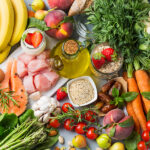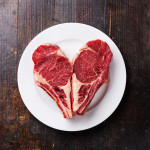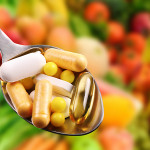By David Blyweiss, M.D., Advanced Natural Wellness
September 23, 2019
I have men come into my office all the time looking for a little help in the bedroom. When it comes to intimate time with their partners, many of my patients have the desire…but are lacking the ability.
Most of these men are hoping I’ll prescribe a little blue or amber pill to keep them rigid for hours on end.
Sure, these pills provide a quick fix — improving blood flow to erectile tissue — but it’s only temporary.
These enhancing pills don’t correct the root of your problem. It’s like mopping the floor while the tub is still overflowing.
I didn’t even mention yet the horrible side effects of these drugs, or the fact they don’t work for everyone.
You see, almost all cases of erectile dysfunction are directly related to circulatory problems. A lot of it is caused by damage to the inner lining (endothelium) of your blood vessels.
Open your arteries, improve blood flow for a new health miracle...
Did you know your circulatory system has over 60,000 miles of arteries, veins and other blood vessels, if stretched end to end?
But as you age, your blood vessels undergo changes, which may cause them to stiffen, thicken and get clogged.
GOOD NEWS! Doctors have now identified a “Miracle Molecule” inside your arteries that helps OPEN your arteries and IMPROVE blood flow.
It’s what Dr. Valentin Fuster calls it, "One of the most important discoveries in the history of cardiovascular medicine."To you, that means...
- Healthy blood pressure
- Sharper mind and memory
- Skyrocketing energy and muscular strength
- Increased pleasure and passion in the bedroom
- Improved circulation to every cell and organ in your body
Go here to discover a new natural way to significantly boost the levels of this miracle molecule in YOUR body NOW!
With my patients, I typically see arterial plaque forming in their coronary arteries, penile arteries, kidney arteries, and the list goes on. And lately, I even see these symptoms in 25 to 30-year-olds!
Whether you’re young or old, the basic problem is the same. High blood pressure and plaque build-up in your blood vessels damage the delicate linings in your arteries. That damage stops blood from flowing freely throughout your body.
When this happens, your body can’t pump enough blood to your genitals to maintain an erection.
And while that sounds like a horrible fate on its own, it’s actually the least of your worries.
That’s because it’s a sure bet your heart and brain are also suffering the consequences that accompany reduced blood flow.
The truth of the matter is, if you have ED you’re also at a much higher risk of a heart attack, stroke and other cardiovascular problems in the not-so-distant future.
So sure, you can pop as many “get-it-up-in-a-hurry” pills as you want. But you might also be hurrying your way to a life of disability – maybe even death – if you don’t take your erectile problem as a serious wake up call.
So What’s the Better Option for ED?
Now that I have your attention, let’s talk about what really needs to take place to get you fit, firm and resilient in the bedroom – and keep your heart and brain healthy at the same time.
The World's Quickest Solution for Ending Prostate and Urinary Misery
This has recently been revealed to be one of the only real breakthroughs in prostate health.
The seeds of a strange fruit (sometimes called "Chinese Apples") hold powerful phytonutrients that are a revolution in prostate health.
In fact, UCLA and Veterans Administration research have now proved this to be true.
Not only that, but it may be the worlds quickest solution for ending prostate misery.
Simply stated, these phytonutrients represent a huge step beyond beta sitosterol, saw palmetto, and other phytosterols alone.
Simply click HERE if you want to have fast prostate relief...restful, uninterrupted sleep...no more constant "urges to go"...enhanced virility...and optimal prostate support for life.
The most important substance involved in relaxing and expanding your blood vessels is nitric oxide, or NO. When nitric oxide is plentiful, your arteries, blood vessels and veins are wide open.
Blood surges through them exactly the way it should – to your heart, brain and even your genitals.
But here’s the thing…
By the time you reach age 40, your body makes about half as much NO as it did in your youth. This may be why ED is no longer an “old man’s” problem. Today, it also affects about one in four men under the age of 40. That explains why I see so many young guys looking for help.
There are plenty of ways to naturally boost NO production in your body.
Foods and beverages that contain anthocyanins are one trick you can put to use immediately. They work by reducing inflammation and enhancing the release of NO.
Strawberries, blueberries, cherries – even red wine – are all loaded with anthocyanins. And when you eat these antioxidant-rich foods regularly, it can cut your chances of erectile dysfunction by about 14%.
At the same time, these foods help to decrease arterial stiffness, lower blood pressure, dilate your arteries and cut down on plaque build up. Plus, people who eat more blueberries are able to delay cognitive aging by up to 2.5 years.
So eating more of these tasty fruits is a no-brainer.
Certain vegetables – ones that are rich in natural chemicals called nitrates – can also help your body produce more nitric oxide.
Red beetroot (or beetroot juice) is a great source of nitrates. I like to drink my beetroot juice mixed with apple juice, lemon juice and a just a bit of ginger…this gives it a real zing!
Next, leafy greens, like arugula, spinach and kale are at the top of the list. Other foods that are very high in nitrate include celery, lettuce, Chinese cabbage, radish and turnips.
If you’re reading carefully, you’ll notice a pattern here. Eating a healthy diet filled with nutrient-packed fruits and vegetables can do your body a world of good — without any little blue pills.
Finally, the quickest and easiest way to boost your NO levels is by taking an NO boosting supplement. Look for one that contains a blend of beet root extract and arginine (another NO enhancer).
Remember… if you can’t keep up the action in the bedroom, you’re at high risk of far more serious problems down the road. So don’t wait to get started.
SOURCES:
Banks E, et al. Erectile dysfunction severity as a risk marker for cardiovascular disease hospitalisation and all-cause mortality: a prospective cohort study. PLoS Med. 2013;10(1):e1001372.
Capogrosso P, et al. One patient out of four with newly diagnosed erectile dysfunction is a young man–worrisome picture from the everyday clinical practice. J Sex Med. 2013 Jul;10(7):1833-41.
Wallace TC. Anthocyanins in Cardiovascular Disease. Adv Nutr. 2011 Jan; 2(1): 1–7.
Cassidy, A, et al. Dietary flavonoid intake and incidence of erectile dysfunction. Am J Clin Nutr. First published January 13, 2016.
Jennings A, et al. Higher anthocyanin intake is associated with lower arterial stiffness and central blood pressure in women. Am J Clin Nutr. 2012 Oct;96(4):781-8.
Devore EE, et al. Kang JH, Breteler MM, Grodstein F. Dietary intakes of berries and flavonoids in relation to cognitive decline. Ann Neurol. 2012 Jul;72(1):135-43
Hord NG, et al. Food sources of nitrates and nitrites: the physiologic context for potential health benefits. Am J Clin Nutr. 2009 Jul; vol. 90 no. 1 1-10.







